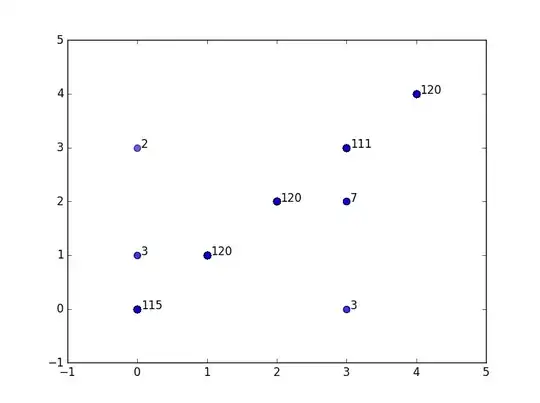I am confused on this problem. My professor gave this as the solution:
$S_{N_{T}}$ is the time of the last arrival in $[0, t]$. For $0 < x \leq t, P(S_{N_{T}} \leq x) \sum_{k=0}^{\infty} P(S_{N_{T}} \leq x | N_{T}=k)P(N_{T}=k) $
$= \sum_{k=0}^{\infty} P(S_{N_{T}} \leq x | N_{T}=k) * \frac{e^{- \lambda t}*(\lambda t)^k}{k!}$.
Let $M=max(S_1, S_2, ..., S_k)$ where $S_i$ is i.i.d. for $i = 1,2,.., k$ and $S_i $~ Uniform$[0,t]$.
So, $P(S_{N_{T}} \leq x) = \sum_{k=0}^{\infty} P(M \leq x)\frac{e^{- \lambda t}*(\lambda t)^k}{k!} = \sum_{k=0}^{\infty} (\frac{x}{t})^k \frac{e^{- \lambda t}*(\lambda t)^k}{k!} = e^{- \lambda t} \sum_{k=0}^{\infty} \frac{(\lambda t)^k}{k!} = e^{- \lambda t}e^{- \lambda x} = e^{\lambda(x-t)}$
If $N_t = 0$, then $S_{N_{T}} = S_0 =0$. This occurs with probability $P(N_t = 0) = e^{- \lambda t}$.
Therefore, the cdf of $S_{N_{T}}$ is: $P(S_{N_{T}} \leq x) = \begin{array}{cc} \{ & \begin{array}{cc} 0 & x < 0 \\ e^{- \lambda (x-t)} & 0\leq x\leq t \\ 1 & x \geq t \end{array} \end{array}$
I don't really understand the part of creating the variable M of the maximum of k i.i.d. random variables in order to solve the problem. Any help would be greatly appreciated, thank you!
